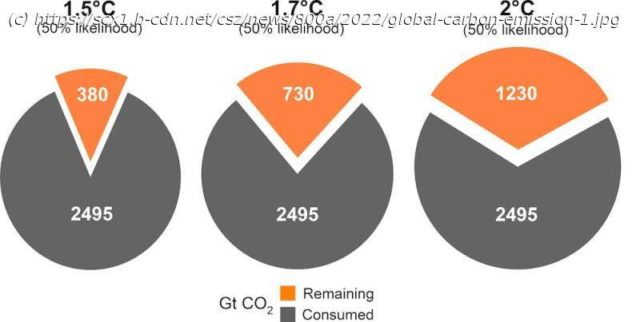Global carbon dioxide emissions from all human activities remain at record highs in 2022, and fossil fuel emissions have risen above pre-pandemic levels, according to a new analysis by an international body of scientists.
Global carbon dioxide emissions from all human activities remain at record highs in 2022, and fossil fuel emissions have risen above pre-pandemic levels, according to a new analysis by an international body of scientists.
The analysis, by the Global Carbon Project, calculates Earth’s „carbon budget“, which is how much CO₂ humans have released, and how much has been removed from the atmosphere by the oceans and land ecosystems. From there, we calculate how much carbon can still be emitted into the atmosphere before Earth exceeds the crucial 1.5℃ global warming threshold.
This year, the world is projected to emit 40.6 billion tons of CO₂ from all human activities, leaving 380 billion tons of CO₂ as the remaining carbon budget. This amount of emissions is disastrous for the climate—at current levels, there is a 50% chance the planet will reach the 1.5℃ global average temperature rise in just nine years.
We’ve seen significant progress towards decarbonization and emission reduction from some sectors and countries, particularly in renewable electricity generation. Yet, as world leaders gather for the COP27 climate change summit in Egypt this week, the overall global effort remains vastly insufficient.
Humanity must urgently cut global emissions if we are to retain any hope of averting the most catastrophic impacts of climate change.
Coal and oil emissions up, gas down, deforestation slowing
Based on preliminary data, we project that CO₂ emissions from coal, natural gas, oil, and cement use (fossil emissions) will increase by 1% in 2022 from 2021 levels, reaching 36.6 billion tons. This means 2022 fossil emissions will be at an all-time high, and slightly above the pre-pandemic levels of 36.3 billion tons in 2019.
Let’s put the 2022 growth of 1% (or around 300 million metric tons) into perspective:
it’s the equivalent to adding an extra 70 million US cars to the world’s roads for a year
it’s higher than the 0.






